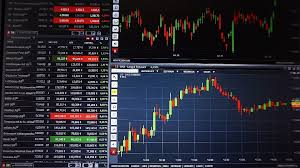
Forex day trading is an exciting yet challenging field that attracts investors and traders from around the globe. The aim is to capitalize on small price movements within the foreign exchange market, closing all trades by the end of the day to avoid overnight risks. Successful day trading requires a solid understanding of market dynamics, a well-crafted strategy, and the right tools to execute trades efficiently. To enhance your Forex trading experience, consider utilizing platforms like forex day trading ZAR Trading that offer robust features tailored for day traders.
Understanding the Forex Market
The Forex market is the largest and most liquid financial market in the world, with a daily trading volume exceeding $6 trillion. Unlike traditional stock markets, Forex trading operates 24 hours a day, five days a week, providing ample opportunities for day traders. Major currency pairs like EUR/USD, GBP/USD, and USD/JPY are the most traded, but there are also many minor and exotic pairs that can present unique trading opportunities.
Key Characteristics of Day Trading
- Short-Term Focus: Day traders typically hold positions for a few minutes to several hours, aiming to profit from small fluctuations in currency prices.
- Leverage Use: Traders often use leverage to magnify gains, which also increases the risk of losses.
- High Volume of Trades: Day traders may execute dozens of trades in a single day, requiring quick decision-making and swift actions.
- Technical Analysis: Day traders rely heavily on charts and technical indicators to determine entry and exit points.

Essential Strategies for Day Trading
To succeed in Forex day trading, it’s vital to adopt effective strategies. Here are some popular day trading strategies:
1. Scalping
Scalping involves making dozens or hundreds of trades in a day, attempting to profit from small price changes. Scalpers focus on tight spreads and rapid execution, often targeting currency pairs with high liquidity. This strategy requires a significant time commitment and intense concentration.
2. Trend Following
Trend following is a strategy where traders identify and follow trends in the market. Traders enter positions in the direction of the trend, relying on indicators such as moving averages. The key to success is knowing when to enter and exit the market, using stop-loss orders to minimize losses.
3. Range Trading
Range trading is based on the concept of support and resistance levels. Traders buy when the price hits support and sell at resistance. This strategy works best in sideways markets and requires a good understanding of price action.
Essential Tools for Day Traders

A successful day trader should be equipped with the right tools. Here are some essential tools and platforms:
- Trading Platform: Select a reliable trading platform that offers real-time data, fast execution speeds, and technical analysis tools.
- Charting Software: Advanced charting software is vital for conducting technical analysis and identifying trading opportunities.
- News Feed: Staying updated with economic news and events is crucial since they can significantly impact currency prices.
- Risk Management Tools: Employ tools such as stop-loss orders to protect your capital and manage risk effectively.
Managing Risk in Day Trading
Risk management is one of the most critical aspects of successful trading. Here are several strategies you can implement:
1. Set Stop-Loss Orders
Always set stop-loss orders to limit potential losses on any trade. This minimizes the impact of unfavorable market movements on your capital.
2. Use Proper Position Sizing
Determine the appropriate position size based on your trading account balance and risk tolerance. A common rule is to risk no more than 1-2% of your account on a single trade.
3. Diversify Your Trades
Don’t put all your capital into one trade or currency pair. Diversification can help spread risk and reduce the impact of a single loss.
Psychological Aspects of Day Trading
Trading psychology plays a significant role in your success as a day trader. Emotions like fear and greed can cloud judgment, leading to poor decision-making. Here are some tips to help manage your trading psyche:
- Develop a Trading Plan: A clear trading plan can help keep your emotions in check and guide your decisions.
- Stay Disciplined: Stick to your strategy and avoid making impulsive decisions based on emotions or market noise.
- Practice Patience: Sometimes, the best trade is no trade at all. Wait for your setup to meet your criteria before entering the market.
Conclusion
Forex day trading can be lucrative for those who take the time to learn and practice effective strategies. With the right tools, a solid understanding of the market, and disciplined risk management, traders can position themselves for success. Remember, continuous education and practice are key factors in becoming a proficient day trader. Leverage resources and platforms like ZAR Trading to facilitate your trading journey and enhance your capabilities. By adopting the right mindset and tools, you can navigate the fast-paced world of Forex day trading and work towards achieving your financial goals.

